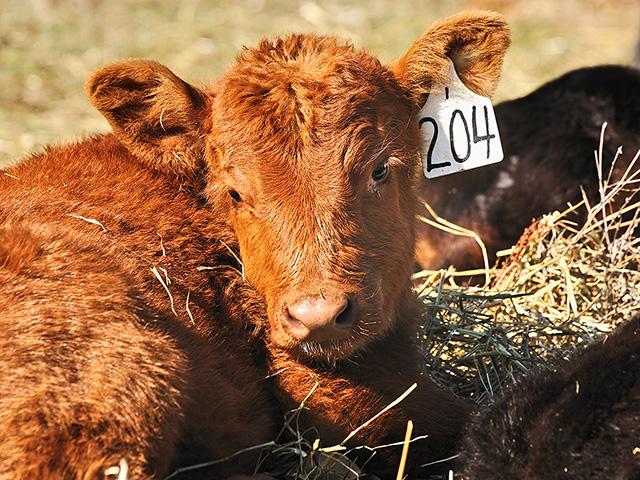Ask the Vet
Delivery Issues Set Up Calf for Problems
READER: I am trying to save a calf. He will not suck a nipple, so we feed him with a tube two times a day. He is 21 days old. He does not stand up straight on his front legs and seems to have no control over them. They just fold under him. His back legs seem fine. What can we do for him?
Dr. McMillan: This is a case where I would advise getting your herd veterinarian involved early to fully evaluate the situation. My first concern is whether what is going on with his front legs could be related to the feeding problem. Without seeing him, I suspect he may have contracted tendons and possibly nerve damage.
Contracted tendons can occur when a large, developing calf's legs don't have room to move and stay flexed in the last weeks of gestation. Large calves are also more likely to have difficulty being born. Both the amount of pressure and the length of time that pressure exists on those legs can damage nerves in the calf's legs, which can lead to paralysis. Those nerves can also be damaged if the calf had to be pulled, especially if OB chains and a calf jack are used improperly, or a vehicle or tractor was used to pull the calf. Prolonged labor and a difficult birth can even lead to brain damage, which is another possible reason a calf may be slow to get up and begin nursing.
If contracted tendons are the problem, those are typically treated with splints applied to the legs to gradually, gently stretch tendons and straighten legs. This can be successful if done properly; but if done incorrectly, it can cut off circulation and make things worse.
P[L1] D[0x0] M[300x250] OOP[F] ADUNIT[] T[]
Most normal calves quickly adapt to a bottle. My approach to get them nursing is to back them into a corner, put some milk on the nipple, hold the head up with one hand and put a finger in the calf's mouth to see if it will suck. Then, I slip the nipple into its mouth. You may need to squeeze the nipple or gently close the calf's mouth onto it to get some milk to come out. New nipples can be stiff, so it's not a bad idea to keep an old nipple around to start a calf with. If you don't have one, warming a new nipple can help soften it. Also try enlarging the hole in the nipple to increase milk flow. You might even try a smaller lamb nipple. Switch back to a normal nipple once he starts nursing well.
The biggest concern with a bottle-raised calf is getting milk into its respiratory tract. That can lead to aspiration pneumonia. The risk is higher with calves that don't quickly take to a bottle.
Lastly, you can always try a bucket. Some calves just do better on a bucket than a bottle. They are all individuals, so be patient and keep trying until you find something that works.
READER: I have a young cow on her second calf. She has an ugly udder and two overly large teats. The calf is doing fine but won't nurse those teats. I have tried to milk them out without much success. If I insert a small metal tube to drain the milk, will it damage the udder?
Dr. McMillan: This cow has a condition commonly called "balloon teats." Teat and udder quality is a top reason for culling cows. The Beef Improvement Federation has a scoring system to help you make those culling decisions (see beef.unl.edu/learning/udder_score.shtml).
A cow's udder is an amazing structure. At the end of the teat is a complex structure called the "street canal," a one-way valve that releases milk to the calf but keeps infectious organisms out. A large metal teat needle, as you describe, can introduce infectious organisms into the teat and udder. It can also temporarily or permanently damage the street canal, making the udder vulnerable to infections.
On a few exceptional occasions when I could not milk out a teat, I have used a much smaller, single-use sterile plastic cannula to drain it. In some of these cases, the calf has been able to begin nursing the teat afterward. It's important to note that this condition will recur with the next calf. It significantly reduces milk production and weaning weights, and there is a chance the calf doesn't receive adequate colostrum. I advise you sell this cow and cast a questioning eye to her dam and sire.
Please contact your veterinarian with questions pertaining to the health of your herd. Every operation is unique, and the information in this column does not pertain to all situations. This is not intended as medical advice but is purely for informational purposes.
Write Dr. Ken McMillan at Ask The Vet, 2204 Lakeshore Dr., Suite 415, Birmingham, AL 35209, or email vet@progressivefarmer.com.
[PF_0620]
(c) Copyright 2020 DTN, LLC. All rights reserved.




